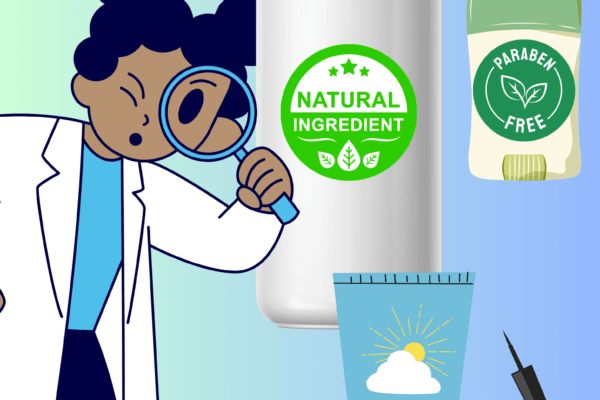
Classtimes
Class-time will be coordinated
Course Type
Description
In this course, students will explore the connection between personal care products and disproportionate rates of harm toward People of Color. Using a systems thinking approach, students will learn how beauty injustices, such as colorism, skin color, and hair discrimination, lead to higher chemical exposure and higher rates of asthma, cancers, and endocrine disorders.
Students will use consumer product safety databases to screen their personal care products. They will analyze the Safety Data Sheets (SDS) of their products’ ingredients and learn about the chemicals’ health impacts on human bodies. Next, they will analyze asthma, cancers, and endocrine disorder data and identify patterns, trends, structures, and mental models that lead to disproportionate rates of harm to People of Color. As a result, they will be able to recognize common harmful ingredients and minimize exposure to them.
Students will become agents of change by sharing their learning with others, advocating for law changes, and personally strengthening their protection from harmful chemicals so that they can ensure a healthier future for themselves and their loved ones.
State Standards
HS-LS3-2
Make and defend a claim based on evidence that genetic variations (alleles) may result from (a) new genetic combinations via the processes of crossing over and random segregation of chromosomes during meiosis, (b) mutations that occur during replication, and/or (c) mutations caused by environmental factors. Recognize that mutations that occur in gametes can be passed to offspring.
Clarification Statement:
- Examples of evidence of genetic variation can include the work of McClintock in crossing over of maize chromosomes and the development of cancer due to DNA replication errors and UV ray exposure.
HS-LS3-4(MA)
Use scientific information to illustrate that many traits of individuals, and the presence of specific alleles in a population, are due to interactions of genetic factors and environmental factors.
Clarification Statements:
- Examples of genetic factors include the presence of multiple alleles for one gene and multiple genes influencing a trait.
- An example of the role of the environment in expressed traits in an individual can include the likelihood of developing inherited diseases (e.g., heart disease, cancer) in relation to exposure to environmental toxins and lifestyle; an example in populations can include the maintenance of the allele for sickle-cell anemia in high frequency in malaria-affected regions because it confers partial resistance to malaria.
HS-ETS1-1
Analyze a major global challenge to specify a design problem that can be improved. Determine necessary qualitative and quantitative criteria and constraints for solutions, including any requirements set by society.*
Clarification Statement:
- Examples of societal requirements can include risk mitigation, aesthetics, ethical considerations, and long-term maintenance costs.
HS-ETS1-2
Break a complex real-world problem into smaller, more manageable problems that each can be solved using scientific and engineering principles.* From the 8 science & engineering practices (p. 101):
1. Asking questions (for science) and defining problems (for engineering).
3. Planning and carrying out investigations.
4. Analyzing and interpreting data.
6. Constructing explanations (for science) and designing solutions (for engineering).
7. Engaging in argument from evidence.
8. Obtaining, evaluating, and communicating information.
HS-ETS1-3
Evaluate a solution to a complex real-world problem based on prioritized criteria and tradeoffs that account for a range of constraints, including cost, safety, reliability, aesthetics, and maintenance, as well as social, cultural, and environmental impacts.*
HS-ETS1-6(MA)
Document and present solutions that include specifications, performance results, successes and remaining issues, and limitations.*
HS-PS1-1
Use the periodic table as a model to predict the relative properties of main group elements, including ionization energy and relative sizes of atoms and ions, based on the patterns of electrons in the outermost energy level of each element. Use the patterns of valence electron configurations, core charge, and Coulomb’s law to explain and predict general trends in ionization energies, relative sizes of atoms and ions, and reactivity of pure elements.
HS-PS1-3
Cite evidence to relate physical properties of substances at the bulk scale to spatial arrangements, movement, and strength of electrostatic forces among ions, small molecules, or regions of large molecules in the substances. Make arguments to account for how compositional and structural differences in molecules result in different types of intermolecular or intramolecular interactions.
HS-PS2-6
Communicate scientific and technical information about the molecular-level structures of polymers, ionic compounds, acids and bases, and metals to justify why these are useful in the functioning of designed materials.*
Supports Available to Students
Tier 1 (Supports provided to ALL students)
Positive classroom norms, high expectations for all students, Universally Designed Learning, evidence-based standards-aligned academic curriculum and instruction, social emotional learning, progress monitoring, varied and differentiated instruction and learning opportunities
Tier 2 (Supports provided to targeted SMALLER groups of students)
- Small group instruction
- Student self-assessment and feedback
- Increased frequency with progress monitoring
Tier 3 (Intensive supports provided to SMALL groups or INDIVIDUAL students)
- Intensive progress monitoring
- Wraparound team check-ins
- Highly individualized supports and interventions
Skills-learned
- Increased awareness and/or advocacy of how personal care products can impact the human body
- How to determine if a personal care product is safe
- How to determine the safety of individual chemicals within a personal care product

About Raks Derival
Ms. Derival (she/they) is a second-generation Cambodian woman, daughter of refugee immigrants, and mother of two Cambodian-Haitian sons. She graduated from Suffolk University with a degree in biochemistry and forensic science and worked in forensic toxicology and green chemistry labs before joining Innovation Academy Charter School. Ms. Derival teaches chemistry, green chemistry, forensic science, and science and social justice classes through anti-racist and culturally relevant lenses. She is also passionate about healing the world through kindness and science, creating positive energy in social justice movements, and empowering others to remember that they are always, and in all ways, more extraordinary than they think they are.